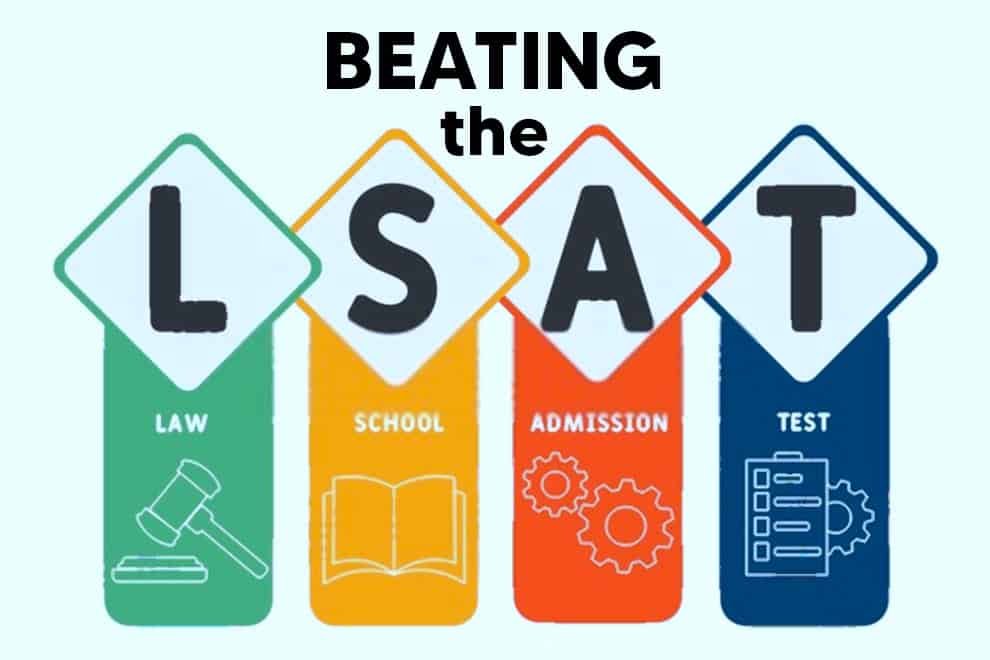Beating the LSAT is something that many aspiring law school students are interested in achieving. Whether it’s your first time taking this notoriously difficult exam or you are a repeat test-taker that is trying to improve their score, there are plenty of tips to keep in mind that can help you tackle this test. Our article gives you essential advice on beating the LSAT and achieving the LSAT score of your dreams.
Why the LSAT Is a Notorious Exam
The LSAT is a well-known exam with a reputation for being difficult. This notorious reputation is due to how long most students study before taking this test in addition to the topics that the LSAT tests. Many of them are unfamiliar question types and principles to most students, which ensures that test-takers will have to learn new ways of thinking and understanding question stems if they want to pass.
Most individuals that take the LSAT also take it multiple times, and the score that you receive on the LSAT is a significant factor in your law school admissions applications. These factors combined make the LSAT a high-stress test, and there are tips and tricks that can help cut down on stress.
Tips for Beating the LSAT
The following tips can help you beat the LSAT and tackle any of the questions or concepts you feel unfamiliar with, resulting in a better score on this exam with consistent practice.
Take an Initial Practice Exam
One of the best ways to start your LSAT preparation journey is to take an initial practice LSAT exam completely cold. This means that you don’t look at any of the questions ahead of time or try to familiarize yourself with the LSAT ahead of your test. Simply pick an old LSAT to test with, replicate test-day conditions, and complete the entire exam.
Once you have completed the practice exam, review the answers, obtain your score, and identify how much work you must do to reach your target score range. This will help guide the rest of your LSAT preparations and ensure your studying stays on track.
Understand the Basic Principles of the LSAT
The LSAT tests a few basic principles, and it’s important to understand all of these if you want to succeed in each exam section. The main principles that you will need to ensure you understand include:
- Assumptions
- Over-generalization
- Conditional reasoning
- Negative proof fallacy
- Correlation vs. cause-and-effect
You should also keep in mind that LSAT logic is slightly different from real-world logic. So you shouldn’t bring any outside knowledge or assumptions to the LSAT outside of what is asked in the test questions, as this can interfere with the conclusions the test wants you to draw and lead you to incorrect answers.
Consistent practice of each question type found on the LSAT will help you become more familiar with how the exam asks or words things and the answers it expects, helping you quickly identify right and wrong answers.
Work Your Way Through Previous LSAT Tests
Throughout your studying, you should periodically take previous LSATs to measure your progress and recalibrate your study plan as necessary. Doing this helps you beat the LSAT because you are constantly working to identify any strengths and weaknesses and ensuring that your study plan supports you in the areas you need most.
Utilizing continual check-ins with full-timed LSATs will also make you more familiar with the general testing conditions that the LSAT is taken in officially, easing stress and anxiety of the unknown on testing day and allowing you to focus on the test more than anything else.
Review Your Results Thoroughly
Reviewing your test results thoroughly when taking practice exams and completing simple practice questions is essential to beating the LSAT. You should be aiming to understand why you got questions correct and why you got them wrong. This is a key part of identifying your strengths and weaknesses, in addition to figuring out incorrect methods of thinking or logic that led you to select the wrong answers.
By doing this, you become more familiar with LSAT logic, learn to identify bad LSAT arguments that lead you astray, become accustomed to different question types, and can easily recognize the assumptions or inferences you are expected to make in order to choose the correct answer.
Develop a Realistic Study Plan
A realistic study plan is vital to beating the LSAT, as it will help guide you toward your target LSAT score range. You should develop a study plan that takes into account any job and family obligations in addition to your desired test date and how long you think you need to study.
Make sure that when you craft your study plan, you stick to it, as consistent studying is the best way to learn all you need about the LSAT and improve your score steadily over time.
Do You Need an LSAT Tutor?
Sometimes, beating the LSAT requires the assistance of an LSAT tutor to help guide you through test preparation strategies. A dedicated tutor will work with you one-on-one to help you identify weaknesses and strengths that you may have trouble finding on your own. Additionally, a tutor can provide you with targeted exercises that help you understand the LSAT and its many question types.
However, if you decide against an LSAT tutor, make sure to follow all of the tips in our article for your best chance at beating the LSAT and achieving your target score.
ALSO READ: Preparing For Law School: Top 6 College Degrees To Consider










